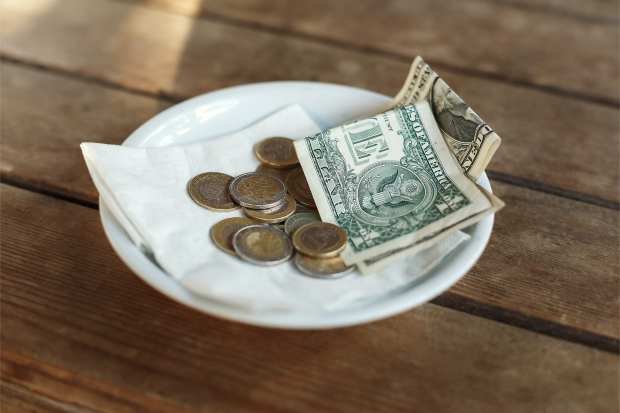Even Bad Tippers Might Pay More With Better Tech

The rise of digital payments and the gig economy cannot guarantee that consumers will tip. But new technology is sure making tipping easier — both for consumer and workers — even if human nature is, well, human nature.
Here’s the dim news: A new study from the National Bureau of Economic Research (NEBR) shows that the majority of Uber riders don’t tip their drivers. The Verge reported the study showed only 1 percent of riders always tip and more than half (60 percent) never do. On average, a driver will get a tip of 50 cents a trip, but regular tippers give $3 on average. Men tip more than women, and women drivers get tipped more.
The team has a lot of insight into the issue because it was the one that actually helped Uber to implement its in-app tipping options, and they pulled data from over 40 million rides. They found that only about 16 percent of drivers are tipped. Part of the reason could be in the implementation of the tipping process. Riders don’t get a chance to tip a driver until after the drive is over, and that could give them less incentive to do so.
Uber said the report relied on data from 2017, meaning the data is at least two years old. Even so, tipping habits are always a cause for concern when it comes to workers and employers — especially when it comes to gig workers.
DoorDash Changes
Amid public retaliation, for instance, DoorDash has abandoned its questionable pay model, and will now increase driver earnings by the exact amount a customer tips on every order.
Just a few months ago, DoorDash announced that it has a new pay model that aims to boost delivery workers’ earnings from the app. “We developed this approach with input from customers and Dashers, including members of our Dasher Community Council. We have been testing the new model this month and refining the details based on feedback we’ve received from Dashers. We’ll continue to make improvements as we roll it out to all Dashers next month,” Tony Xu, DoorDash co-founder and CEO, wrote in a blog post.
Under the new model, base pay for delivery drivers will now range from $2 to $10-plus per delivery depending on the duration, distance and desirability of the order. Deliveries that are expected to take more time, that require a longer distance and that are less popular with Dashers will have higher base pay.
In addition, Dashers can earn more through promotions such as Peak Pay and Challenge Bonuses that will roll out in the coming months.
As for tips, customers will be able to add a gratuity at checkout or after the delivery.
Indeed, tipping is undergoing changes.
Traditional payment practices are rapidly being retired as faster disbursement solutions become available. From the gig economy to small and medium-sized businesses (SMBs) and the restaurant industry, workers and business owners alike have clearly gotten a taste for instant payments, and have little appetite for going back to old practices.
Vital Tips
According to the Bureau of Labor Statistics, there are approximately 2.6 million individuals employed as waitstaff in the restaurant industry. For these workers, one of the perks of the job is to receive their tips instantly at the end of a shift, and often in cash.
However, as customers’ payment preferences shift to paying with credit or debit cards, cash falls in short supply, and creates a headache for restaurant workers and managers alike. Cash management solutions could alleviate these payout problems by batching cash transactions and instantly disbursing employee tips to their bank accounts or prepaid cards.
Instant tip payouts are beneficial for restaurants, servers and diners alike. Restaurants equipped with the necessary tools can disburse real-time payments to staff, eliminating delays and the need to divvy up cash at the end of a shift. California-based startup Kickfin alerts servers when they receive money with text or email notifications, and wages are instantly pushed to whatever account a server chooses, including debit, credit or prepaid cards, as well as online wallets.
Look for more movement on tipping — and better tipping — as digital technology and worker demands continue to shift.
